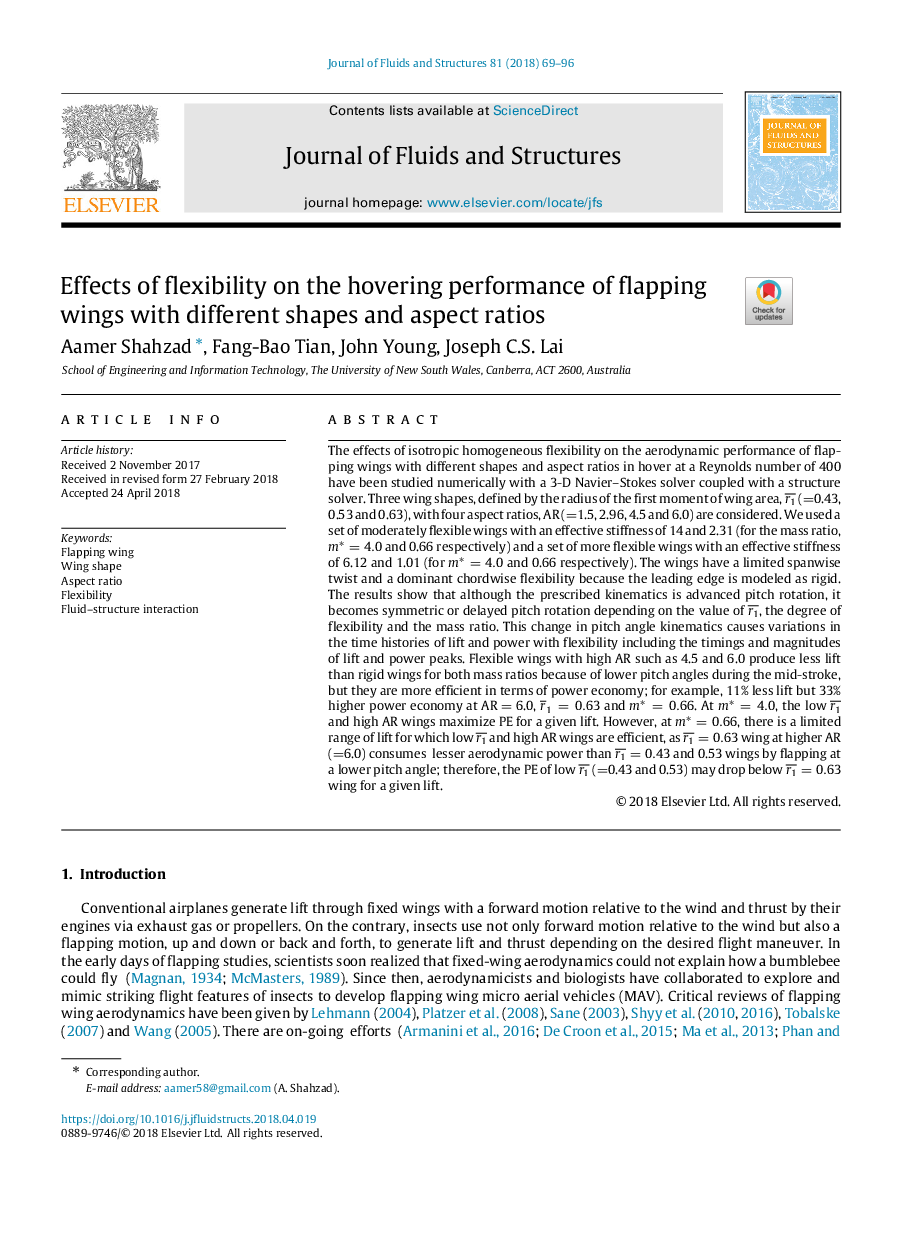| Article ID | Journal | Published Year | Pages | File Type |
|---|---|---|---|---|
| 7175687 | Journal of Fluids and Structures | 2018 | 28 Pages |
Abstract
The effects of isotropic homogeneous flexibility on the aerodynamic performance of flapping wings with different shapes and aspect ratios in hover at a Reynolds number of 400 have been studied numerically with a 3-D Navier-Stokes solver coupled with a structure solver. Three wing shapes, defined by the radius of the first moment of wing area, r1¯ (=0.43, 0.53 and 0.63), with four aspect ratios, AR (=1.5, 2.96, 4.5 and 6.0) are considered. We used a set of moderately flexible wings with an effective stiffness of 14 and 2.31 (for the mass ratio, mâ=4.0 and 0.66 respectively) and a set of more flexible wings with an effective stiffness of 6.12 and 1.01 (for mâ=4.0 and 0.66 respectively). The wings have a limited spanwise twist and a dominant chordwise flexibility because the leading edge is modeled as rigid. The results show that although the prescribed kinematics is advanced pitch rotation, it becomes symmetric or delayed pitch rotation depending on the value of r1¯, the degree of flexibility and the mass ratio. This change in pitch angle kinematics causes variations in the time histories of lift and power with flexibility including the timings and magnitudes of lift and power peaks. Flexible wings with high AR such as 4.5 and 6.0 produce less lift than rigid wings for both mass ratios because of lower pitch angles during the mid-stroke, but they are more efficient in terms of power economy; for example, 11% less lift but 33% higher power economy at AR = 6.0, r¯1=0.63 and mâ=0.66. At mâ=4.0, the low r1¯
and high AR wings maximize PE for a given lift. However, at mâ=0.66, there is a limited range of lift for which low r1¯
and high AR wings are efficient, as r1¯=0.63 wing at higher AR (=6.0) consumes lesser aerodynamic power than r1¯=0.43 and 0.53 wings by flapping at a lower pitch angle; therefore, the PE of low r1¯ (=0.43 and 0.53) may drop below r1¯=0.63 wing for a given lift.
Related Topics
Physical Sciences and Engineering
Engineering
Mechanical Engineering
Authors
Aamer Shahzad, Fang-Bao Tian, John Young, Joseph C.S. Lai,
